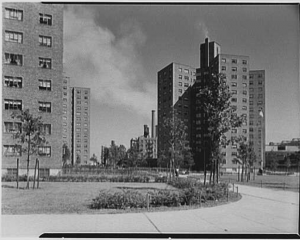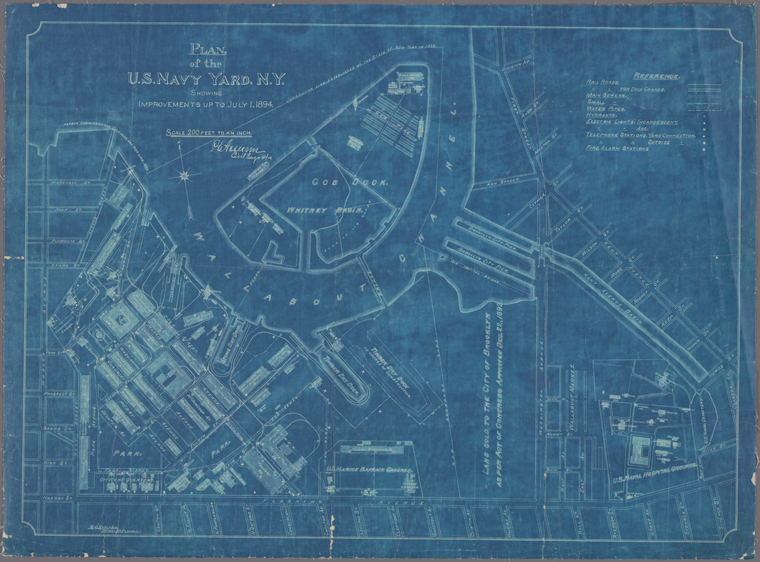Monthly Archives: March 2017
Brooklyn Collection and Site report #3 (due 3/22)
On Monday we visited the Brooklyn Collection at the Brooklyn Public Library to examine newspaper articles, photographs, books, historic fire insurance maps, and more. We had a quick introduction to various digitized collections that you can search from home, including city directories, historic photographs, and the Brooklyn Daily Eagle. If you missed the class visit, you must visit on your own. Be sure to take photos and document primary sources you find that are relevant to your group’s hypotheses.
Site report #3 is due by the start of class on Wednesday, March 22. Download the template, save with a new filename that includes your last name, and when you’ve completed it, save as a reduced file size PDF and upload to our OpenLab course site.
Aya_Morsy_Blog_1
I used a couple of digital archives website to search for Preservation and Development in Vinegar Hill but I was unable to find what I was looking there. “The New York Public Library Digital Collection” was the only digital archive that showed Vinegar Hill in the 1800s. I searched for “Vinegar Hill” but it wasn’t helpful so I decided to search for “Bridge Street” and I found many information about it. I picked these two maps because it shows Vinegar Hill in 1855. As the maps show, it was an industrial and residential neighborhood. There were many shops in the neighborhood. I see that there is a huge difference between Vinegar Hill in 1855 and today. It was full factories and working places unlike now all these stores are closed and its considered to be a dead neighborhood. Also, it was full of residential houses that aren’t there anymore. I see that the neighborhood hasn’t developed much. Many of the surrounding neighborhood were development much more and in a positive way, which makes us question why didn’t Vinegar Hill develop like the other neighborhoods?
https://digitalcollections.nypl.org/items/510d47e0-c001-a3d9-e040-e00a18064a99
https://digitalcollections.nypl.org/items/510d47e0-c000-a3d9-e040-e00a18064a99
Colin Grant | Blog Post #1(Farragut Houses)
Title: Farragut Houses, Brooklyn (near Navy Yard). Exterior II
Contributor Names: Gottscho-Schleisner, Inc., photographerVollmer, Carl A., clientFellheimer & Wagner, client
Created / Published: Sept. 5, 1952
Blog Post #1
For Blog Post #1, we were given the opportunity to focus more on our assigned task by finding a digital archive item pertaining to our topic. What I have chosen is this photo that was taking in 1952 of how the houses looked back then. I did not use a recommended site to find this image, but this photo explains a lot about the beauty and the overall cleanliness the housing complex had back then. The shrubbery and trees surrounding the area gave it an appealing feel and their were actually clean lawns at the time. This find raises questions behind what NYCHA may plan to do with the future matinence in the area. I may have to visit the management office and talk to someone about the cleaning situation surrounding the complex. This is actually promising to see because I couldn’t believe that this was the same place I visited a week ago.
Jarryd Blog 1

http://brooklynhistory.pastperfectonline.com/photo/FAA43D5B-73C4-4C18-9E77-159458871014
I chose this picture because it reminded me of the mural my group observed on Navy St. Its a demonstration of laid off workers protesting for their jobs in 1964. This protest was held within the navy yard, the very place they wanted to be employed. As they say, “History repeats itself”; Right now people are protesting not only for jobs and security but for their right of choice, human rights, their living situation, police brutality, etc. I’m sure in that era, the residents of vinegar hill were dependent on their employment that the Navy Yard provided. I assume that was one of the factors which led to Vinegar Hill being vacant and isolated like it is now.
Armend Sela Site Report #2
I chose this photo because my group member had a similar blueprint and i thought that comparing both blueprints in different time periods would be interesting. This blueprint was issued in 1894, my group members blueprint was issued in 1906. If you compare the two blueprints, you can see that the layout has changed but not drastically. The wallabout channel is present in both blueprints but today the channel does not form a small island that used to be present in the navy yard. it would be great to see a map of the navy yard today and compare all 3 maps or blueprints.
https://digitalcollections.nypl.org/items/c6d9c23e-37d1-7a21-e040-e00a180612a8
ARCH 2205ID_LANA_BELOPUKHOVA-SiteReport#2
Monday, March 13 – sketches and Brooklyn Public Library
On Wednesday we spent some time “turning off our brains” while sketching from upside down paintings. Turning the painting upside down helps us overcome preconceived ideas about what we see. We also looked at Javier’s post comparing contemporary and historic street scenes in Jackson Heights and discussed what makes the contemporary scene more pleasant and how we could draw analytical sketches which emphasize particular aspects in the scene such as shadows, windows, trees, etc.
For Wednesday, revisit Javier’s post. Draw 2-3 sketches from each image in the post (they can be quick sketches) – in each sketch emphasize one particular aspect of the scene that you find significant for the discussion. Bring the sketches to class on Wednesday. Be sure to keep all of your sketches together.
On Monday, we’re visiting the Brooklyn Collection at the Central library of the Brooklyn Public Library, Central Library at Grand Army Plaza (directions). We’ll meet at 1:15 in the lobby. Our appointment with the librarian begins at 1:30 sharp. The Brooklyn Collection is on the 2nd floor of the library. Groups will have time to research and begin to fulfill the research objectives you came up with in class. Be sure to bring the research objectives, as well as your charged phone or camera, something to take notes with, your sketchbook and pencils, and a USB drive if you wish to scan anything from the collection.
Don’t forget! The Wikipedia Art+Feminism edit-a-thon is happening all over the world starting today! New York City events include one on Saturday 10-5 at the Museum of Modern Art, 11 W. 53rd Street in Manhattan and one on Sunday from 2-6 at Interference Archive, 131 8th Street in Brooklyn. Come help improve Wikipedia, no experience necessary!
Blog 1 Jeferson Castro
- I wanted to chose to talk about Vinegar Hill itself for my blog. Vinegar Hill may not be a lively area such as DUMBO or other parts in the city but it does have potential. It has the potential to strive just as Dumbo did but I believe it’s a matter of whether or not the residents of vinegar hill want that lifestyle. Developing neighborhoods usually attract more people and tourists depending on its locations and it could be that the resident of Vinegar Hill are used to a certain lifestyle that they don’t really need that sort of improvement to their community. One thing that Vinegar Hill needs to prosper is more foot traffic, if more people come in and out for stores to the neighborhood it would attract more people to it thus increasing its reputation.





